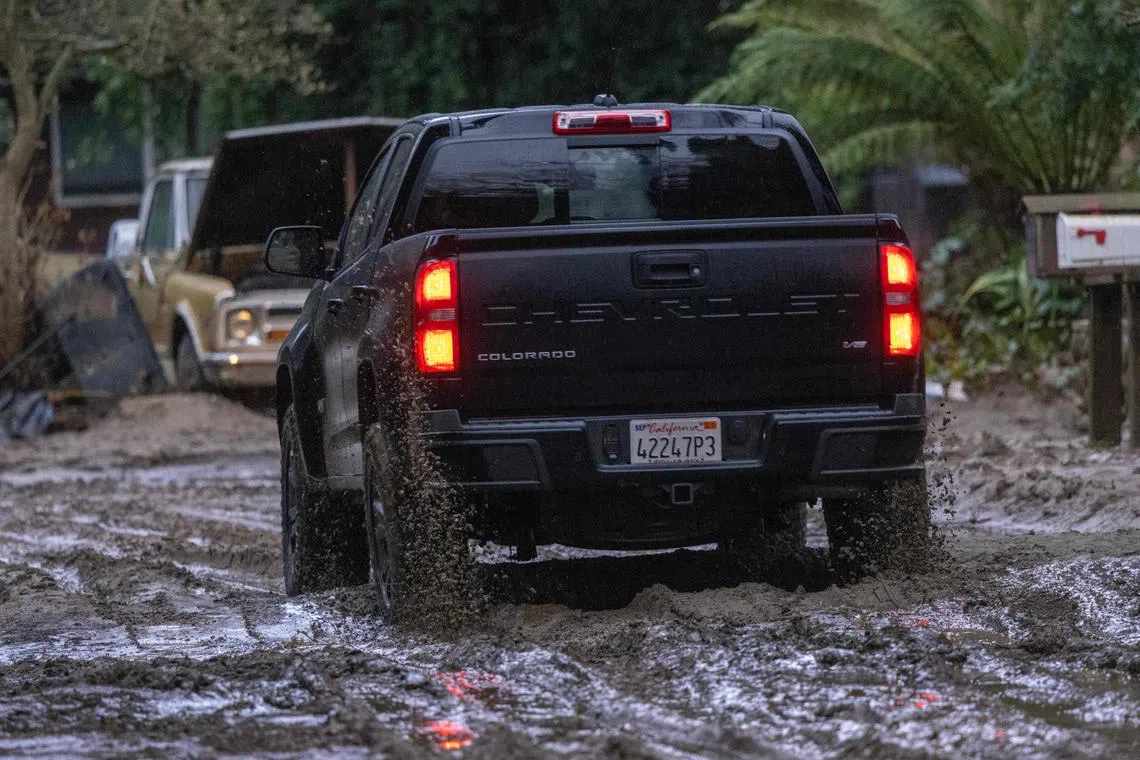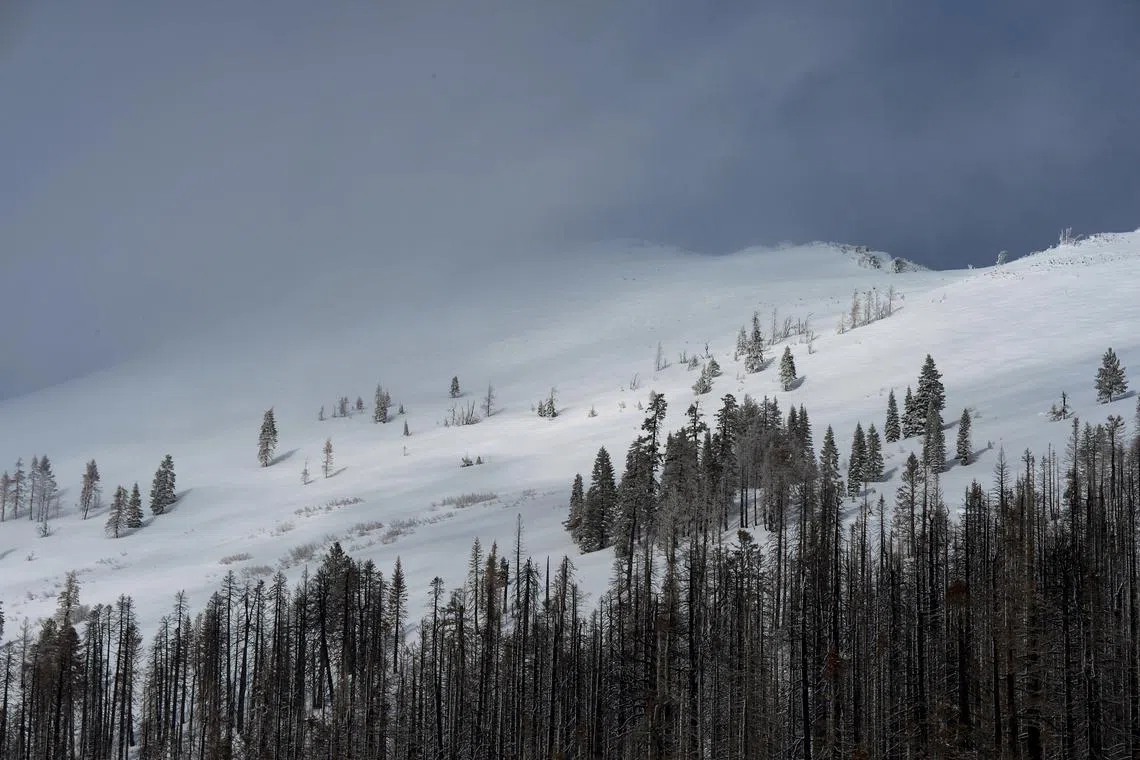Biden declares disaster as California takes another storm-pounding
Sign up now: Get ST's newsletters delivered to your inbox

A truck drives along a muddy street in Felton, California, on Jan 14, 2023.
PHOTO: AFP
Follow topic:
WASHINGTON - United States President Joe Biden has declared a major disaster in California, as the latest in a succession of storm systems blew into the state, bringing heavy flooding to already waterlogged regions and threatening snowfalls of up to 2m.
The latest system was expected to bring “heavy lower-elevation rain, significant mountain snow and strong winds” with “another surge of Pacific moisture” expected on Monday, the National Weather Service said.
It predicted “disastrous flooding” across the lower Salinas River valley, a key agricultural region south of San Francisco Bay.
Late on Saturday, Mr Biden “declared that a major disaster exists in the state of California and ordered federal aid to supplement state, tribal, and local recovery efforts in the areas affected by severe winter storms, flooding, landslides and mudslides”, the White House said in a statement.
The President’s action makes federal funding available to affected individuals in Merced, Sacramento and Santa Cruz counties.
Storms have pounded the Golden State since Dec 26, killing at least 19 people and bringing floods, power outages, mudslides, evacuations and road closures.
On Saturday, a new weather system packing rain, snow and strong winds
While this week should bring some respite, the first of two systems expected to hit California over the US holiday weekend pushed onshore on Saturday, unleashing more heavy rain, the National Weather Service said.
More than 16,000 utility customers were without power as at around 0800 GMT on Sunday (4pm Singapore time), according to PowerOutage.us.
The storms have dropped half the average annual rainfall on the agricultural Central Valley and as much as 4.5m of snow in the mountains.
Flood advisories were in effect across the state on Saturday, and thousands of residents were under evacuation orders and warnings.
A neighbourhood in the Santa Cruz County community of Felton, in central California, flooded for the second time in a week and the third time since the turn of the year.
Residents banded together, helping one another with shovels and squeegees to clean out garages and driveways.
“It sucks,” said Ms Caitlin Clancy, 36, as she shovelled mud on her driveway. “And to go through it a third time, it’s just defeating.”
Sacramento county issued an evacuation order for Wilton and other areas that had suffered severe flooding during a New Year’s Eve storm.
A levee breach in the Bear Creek area of Merced in the San Joaquin Valley flooded homes and stranded animals, according to local media, as officials worked to prevent high waters from overflowing.
At least seven waterways were officially flooded, the California Department of Water Resources said on Friday.

Residents clean up their muddy neighborhood in Felton, California, on Jan 14, 2023.
PHOTO: AFP
California Governor Gavin Newsom told reporters on Saturday that he expected President Biden to sign a major disaster declaration to help the state respond to the emergency.
“These weather events have taken more lives in the last two years than wildfires,” Mr Newsom said at a news conference on Saturday. “That’s how deadly they are.”
In the mountains of the Sierra Nevada, heavy snow and strong winds brought whiteout conditions in some areas, prompting road closures.
Snowfall in the Sierras topped 53cm as at Saturday morning, with about 300cm already on the ground and a few more expected, according to the University of California Berkeley Central Sierra Snow Lab.

Snowfall in the Sierras had topped 53cm as of Saturday morning.
PHOTO: EPA-EFE
The California storms have mitigated but not solved the region’s drought.
The US Drought Monitor revised on Thursday its assessment to lift virtually all of the state out of extreme drought or exceptional drought, the two worst categories, though much of it is still considered to be suffering moderate or severe drought. AFP, REUTERS

